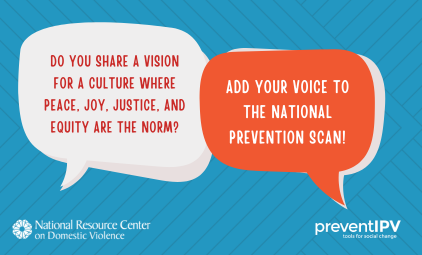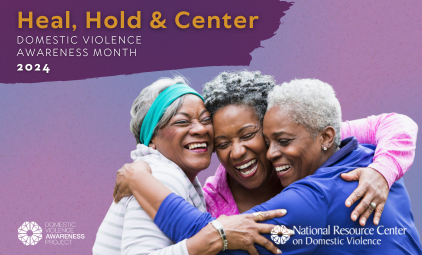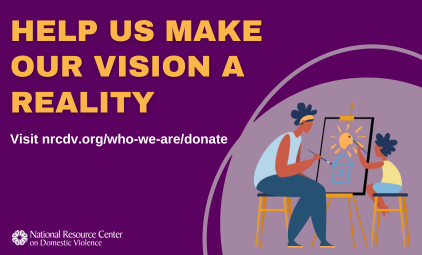 Millions of youth run away or are thrown out from their homes every year. Yet, services designed to support them are rare in most communities. National Runaway Prevention Month (NRPM), sponsored every November by the National Runaway Safeline, is an excellent opportunity to raise awareness of and educate others in your community. The goals of NRPM are two-fold: 1) to raise awareness about the issues that runaways and homeless youth face, and 2) educate the public about strategies to prevent youth from running away from home.
Millions of youth run away or are thrown out from their homes every year. Yet, services designed to support them are rare in most communities. National Runaway Prevention Month (NRPM), sponsored every November by the National Runaway Safeline, is an excellent opportunity to raise awareness of and educate others in your community. The goals of NRPM are two-fold: 1) to raise awareness about the issues that runaways and homeless youth face, and 2) educate the public about strategies to prevent youth from running away from home.
Domestic violence and sexual assault advocates, in particular, are increasingly seeking information and training in the RHY field, given the significant overlap between abuse and homelessness. Exposure to the ongoing abuse of a parent or a child’s own experiences of neglect or physical, sexual, or emotional abuse are all too often the causes of youth running away or being forced from their homes. Life on the streets often exposes them to additional risks or victimization. Not surprisingly, what they have seen in an abusive home environment or experienced on the street is often repeated by the youth themselves in their own relationships. Because homeless youth have so little control over their lives, using violence in relationships may be a way of trying to feel more in control (Runaway & Homeless Youth and Relationship Violence Toolkit).
How Can You Be Involved?
The following are some suggestions for observing and promoting NRPM, as well as supporting advocates, parents, teachers, and other community members in their ongoing efforts to promote the safety and wellbeing of today’s youth – in November and throughout the year.
Become informed. In order to help prevent youth homelessness and intervene with runaway, homeless and other youth in high risk situations it is critical that advocates, teachers, parents, and other service providers and community members become educated about RHY issues. To that end, the National Runaway Safeline offers research and statistics, a Runaway Prevention Curriculum, various awareness and educational materials, as well as training and technical assistance. Youth themselves should also have access to this information so they can help support a peer in need of help.
Also available are resources for advocates addressing the concurrent issues of abuse and homelessness among youth. An example is the comprehensive Runaway & Homeless Youth and Relationship Violence Toolkit by the National Resource Center on Domestic Violence. This Toolkit was developed by and for advocates in the RHY and domestic and sexual assault (DV/SA) fields to help programs better address relationship violence with runaway and homeless youth. The Toolkit organizes information, resources, tips and tools, offering DV/SA advocates information to increase their understanding of runaway and homeless youth and the network of programs and services working with them. Conversely, the Toolkit offers RHY providers information about resources on intimate partner violence and the programs and networks that provide protections and support to victims of violence.
Reach out for help. The National Runaway Safeline estimates that between 1.6 and 2.8 million youth run away each year. Call 1-800-RUNAWAY if you are a teenager who is thinking of running from home, if you have a friend who has run and is looking for help, or if you are a runaway ready to go home. In addition to being accessible via the 24-hour crisis line, the National Runaway Safeline can also be accessed via email, bulletin board or live chat (click on the bright red box on the upper right hand corner of the page). Teachers, advocates and other service providers working with youth are also welcome to call for information about youth homelessness or guidance on how to help someone who may be at risk of running from home.
Each year, NRS handles more than 100,000 incoming and outgoing calls. Incoming calls can come from runaway, homeless and at-risk youth, their friends, family members, teachers, social service organizations, law enforcement officials, and anyone who cares about helping today’s youth. Outbound calls are calls made by NRS on behalf of a caller to a local shelter, Greyhound Lines, Inc. regarding the Home Free program, or other local resources (National Runaway Safeline, 2013).
 Another resource available to teens in need is TXT 4 HELP, a 24-hour text-for-support service offered by National Safe Place. Teens can text the word “safe” and their current location (address/city/state) to 69866. Within seconds, users will receive a message with the closest Safe Place location and contact number for the local youth shelter. Teens will then have the option to reply with “2chat” to text interactively with a mental health professional for more help. National Safe Place is an outreach program designed to provide access to immediate help and safety for all youth in crisis. Locally, Safe Place is a community initiative that designates schools, fire stations, libraries and youth-friendly businesses as Safe Place sites where youth can access help and supportive resources.
Another resource available to teens in need is TXT 4 HELP, a 24-hour text-for-support service offered by National Safe Place. Teens can text the word “safe” and their current location (address/city/state) to 69866. Within seconds, users will receive a message with the closest Safe Place location and contact number for the local youth shelter. Teens will then have the option to reply with “2chat” to text interactively with a mental health professional for more help. National Safe Place is an outreach program designed to provide access to immediate help and safety for all youth in crisis. Locally, Safe Place is a community initiative that designates schools, fire stations, libraries and youth-friendly businesses as Safe Place sites where youth can access help and supportive resources.
 Become a partner in distributing information in your community. Whether you run a coffee shop or work as an advocate at a domestic violence shelter or teach at a high school, you have an opportunity to share information with your audience about the National Runaway Safeline and youth homelessness prevention. NRS offers promotional materials free of charge, including posters, bookmarks, brochures, and wallet cards with the 1-800-RUNAWAY number, stickers and pencils. By handing out the NRS brochure or hanging one of their posters, you may be helping a youth or family in trouble connect with the supports and services they need. Materials are available for download or can be requested by email, fax, or mail with an order form.
Become a partner in distributing information in your community. Whether you run a coffee shop or work as an advocate at a domestic violence shelter or teach at a high school, you have an opportunity to share information with your audience about the National Runaway Safeline and youth homelessness prevention. NRS offers promotional materials free of charge, including posters, bookmarks, brochures, and wallet cards with the 1-800-RUNAWAY number, stickers and pencils. By handing out the NRS brochure or hanging one of their posters, you may be helping a youth or family in trouble connect with the supports and services they need. Materials are available for download or can be requested by email, fax, or mail with an order form.
Plan and implement a NRPM activity in your community. The National Runaway Safeline offers a variety of tools, strategies and resources to parents, teachers, police officers, non-profits, governments, youth, coaches, and any other individuals or groups interested in observing National Runaway Prevention Month. Available on the website is a Community Action Kit providing a step-by-step approach to planning and implementing runaway prevention activities, as well as tips for involving the media. Also available are promotional awareness materials and a Community Planning Guide, which includes suggestions for community activities and ideas for teachers, parents, youth, congregations, businesses and other community members.
 Go green. The Green Light Project is the symbol for National Runaway Prevention Month, and there are a few simple ways in which advocates and other community members can participate in the project. Ideas include, but are not limited to, planning a green light ceremony, securing a landmark or building in the community to be lit green in November, and distributing green lapel pins to local government officials and businesses.
Go green. The Green Light Project is the symbol for National Runaway Prevention Month, and there are a few simple ways in which advocates and other community members can participate in the project. Ideas include, but are not limited to, planning a green light ceremony, securing a landmark or building in the community to be lit green in November, and distributing green lapel pins to local government officials and businesses.
Organizations and groups can also celebrate Green Sock Day by selecting a day in November to wear green socks (or anything green) to raise awareness. Take a group photo and send it to NRS to be featured on their Facebook page and website, and/or tag your share on your own channels with @1800runaway and #NPRM2013.
Spread the word about NRPM through your social media networks. There are many ways in which advocates, youth, parents, teachers and other community members can use the power of social media to raise awareness about runaway and homeless youth issues. Simple ideas include liking NRS on Facebook or following NRS on Twitter; sharing photos documenting your #NRPM2013 efforts; using statistics and research available from NRS in posts and tweets; and joining NRS in celebrating Social Media Day of Action on November 4th.
How are you observing National Runaway Prevention Month this year? Please share your creative ideas!



















